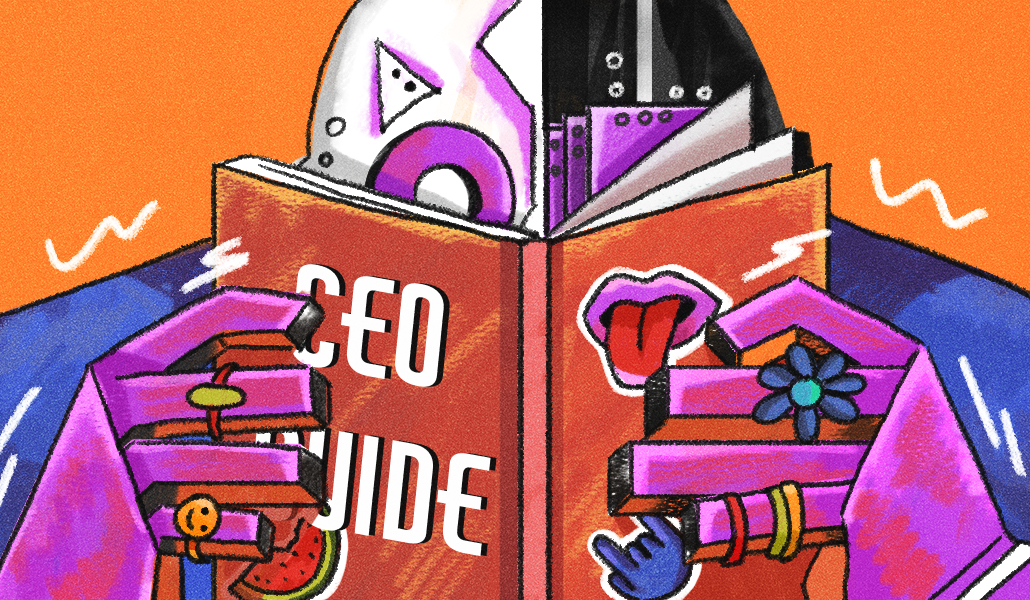Leaders Guide: Understanding Gen Z and AI

This article is part of WorkLife’s special edition, which examines how the jobs and careers of Generation Z professionals will be reshaped and evolve in the AI-informed era. More from the series →
While Generation Z spearheads workplace transformation, managing them can be quite the head-scratcher. Their desire to feel seen, heard and understood have consistently confounded those in positions of authority. Now, factor in the influence of generative AI, and the complexity only intensifies.
After all, this generation has grown up with technology at their fingerprints like no one else before. So when the generative AI boom hit they were among the first to embrace the technology in their organizations.
Michael Jones, CEO of venture fund Science Inc. saw this up close over the summer when the startup studio hosted an entrepreneurship week for 40 teens at its office in Los Angeles. They were split into groups and given the challenge of creating a business plan within a week. By the end, nearly all of those groups had completed the task using AI, said Jones – that’s pitch decks, branding, product renderings and market data all procured and aggregated using AI. It meant they could fully explore their business concepts rapidly and at a minimal cost.
What’s even more impressive is that many of the very young Gen Z staffers had limited prior experience with AI. However, by the end of the event, they had become proficient users of this transformative technology. It’s a salient point for leaders: be aware of the readiness of younger talent to integrate AI into their processes and consider how this willingness can be harnessed to foster problem-solving within their organizations.
“One way to adapt to it all is to think about reverse mentoring,” said Clare Hart, CEO at consulting firm Williams Lea. “Get the younger people who are already fluent with what’s happening to talk about it more and have them work alongside more experienced colleagues who can provide the guardrails.”
But CEOs and managers must tread carefully.
Navigating this enthusiasm requires precise planning, open communication and a grasp of how to make generative AI work for both the company and its youngest execs. Get it right, and those leaders not only streamline AI integration for Gen Z but also pave the way for older colleagues to embrace this transformative tech.
Consider the case of Luke Lintz, a 23-year-old CEO of e-commerce company HighKey Enterprises.
Recognizing that his Gen Z execs were using generative AI to streamline certain aspects of their work, he took a hands-on approach. He encouraged their managers to engage with them, delving into their daily AI usage. His goal was simple: To understand if his theory held true – whether younger executives viewed AI more as an opportunity than a threat, with any potential downsides seen as adaptable challenges.
“Our younger execs weren’t using the technology for all their work,” said Lintz. “Instead, the tech became a substitute for a person who was always available to bounce ideas off.”
In this tech-savvy world, asking the right questions has never been more crucial. More time will be spent in Q&A mode with smart chat becoming a far bigger part of every interface from content to shopping and everything in between. And Lintz isn’t missing a beat. He’s fine-tuning how his company recruits new talent, fully aware that smart chat is fast becoming the primary interface for our digital experiences. He knows that corporate roles need to adapt to fit this new shape if they want to stay ahead of the curve.
“I’d like to add a part of our recruitment process whereby we ask candidates to use ChatGPT for a specific task,” said Lintz. “We’d then audit the prompts they used to complete it, to understand how clear and concise they were with that.”
The management team at corporate gifting platform Giftpack take a similar view. It’s becoming clear to them that how someone asks for a result is just as important as what they ask.
“As a company, it’s essential for us to identify and understand this capability, which is why we ask candidates to prepare data analysis reports and encourage them to incorporate AI into their work,” said Archer Chiang, founder and CEO of Giftpack.
But Giftpack doesn’t stop there. Its management team also uses AI to delve into potential employees’ interests even before they join the team. This approach not only showcases the company’s personal care for its employees but also demonstrates a commitment to individualization, said Chiang.
For example, by analyzing the information candidates provide on their application forms, AI predicts their preferences. If, say, the AI detects a potential preference for the color pink, the recruitment team might customize their offer letter with a pink-themed touch. It’s a small gesture, but Chiang has learne that it’s often the finer details that catch the attention of younger executives when deciding where and for how long they want to work. They are unwavering in their commitment to staying up-to-date and ensuring their skills remain in high demand.
This is precisely where AI shines. It can transform the most tedious and time-consuming tasks into seamless processes – an irresistible prospect for a generation of executives who prioritize meaningful work over purely monetary rewards.
Arti Raman, CEO of AI corporate transformation company Titaniam, shared an anecdote that underscores this transformative power. It involves one of her clients – a Gen Z exec who runs an enterprise IT department. This individual has a team of three under him and is charged with supporting a sizable organization, said Raman. After ChatGPT became popular, he asked his employees to use it to respond to support tickets. It was an astute move from a productivity standpoint, said Raman, but, who added, it could have been better from a risk management perspective. In this particular case, the company plans to embrace the approach while adding guardrails.
And therein lies the kicker. The rapid adoption of AI with younger execs isn’t all generative AI rainbows and puppies. Leaders have to get up to speed fast. With each tech wave, comes change management.
“The challenge is to identify how AI can best help your company based on your goals and strategy,” said Joan Jenkins, CMO of Blueshift, an AI-based customer engagement platform. “A year ago my team was only using it in a limited way. Today, we all use it daily in some form.”
True, Gen Z are learning the way in navigating the trials and tribulations of AI and leaders should take note. That said, there’s a common misconception about brain elasticity and the ability to learn as people age. The path of continuous, lifelong learning is open to individuals of all ages and any organization. In the end, this is about the learned vs. the learners.
“Young or old, you want learners on your team, as your leaders – and in your boardroom,” said David Blake, CEO of workplace learning business Degreed.


